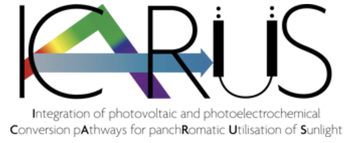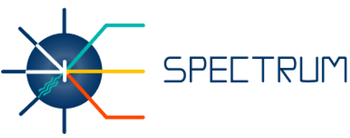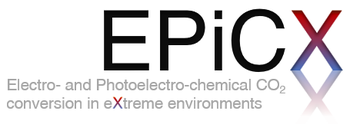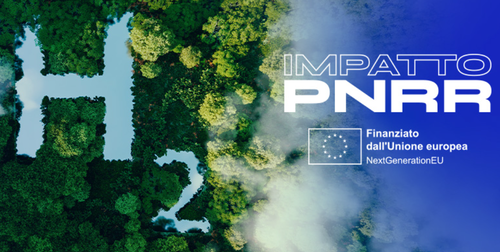Projects
Ongoing

ICARUS
EU Clean Energy Transition Partnership
The general objective of ICARUS is strategic to Europe’s ambition and long-term vision of becoming independent on fossil fuels while strengthening its leadership in renewable energy and hydrogen technologies. ICARUS aims at developing one of the next generation technologies that will represent the pillars of the clean energy transition targeted to achieve carbon neutrality by 2050.
The scientific aim of ICARUS is to boost the efficiency of solar energy conversion and the economic sustainability of green hydrogen through the simultaneous, synergic production of electric power and solar hydrogen, entirely from sunlight and water. This ambitious goal will be achieved through the smart integration of photoelectrochemical (PEC) water splitting and photovoltaic (PV) power generation, using a spectrum-splitting dichroic system to concentrate short-wavelength solar radiation onto the PEC reactor, while transmitting long-wavelength photons to the PV module. This approach guarantees a panchromatic use of sunlight with optimized spectral quantum efficiency. ICARUS will build a prototype to validate the technology in a relevant environment; the system will integrate hydrogen storage at near ambient conditions using a metal hydride reservoir.
The project will bring a pivotal contribution to the clean energy transition by addressing the topic of "Hybrid-RES solutions” in Call Module 03A, which focuses on electricity generation combined with clean energy carriers.

SHINE
POR-FESR
Il progetto SHINE - Solar Hydrogen via INtegration of Energy conversion technologies, prevede l’integrazione intelligente di due tecnologie di conversione dell’energia solare per produrre elettricità rinnovabile e idrogeno verde in parallelo.
Il risultato finale del progetto sarà un prototipo operante outdoor in modo continuativo per dimostrare la fattibilità della nuova tecnologia. L’obiettivo ambizioso per l’efficienza di conversione solare in elettricità e idrogeno è pari al 21%, un notevole progresso rispetto al valore corrente di circa 15% per la produzione di idrogeno solare.
Attività:
Separazione e concentrazione della radiazione solare
Il Work Package 1 prevede lo sviluppo di un dispositivo dicroico in grado di separare la radiazione solare incidente in due porzioni, una delle quali (verderossa-IR) trasmessa su un modulo fotovoltaico ad alta efficienza,
l’altra (blu-UV) concentrata su una cella fotoelettrochimica per la produzione diretta di idrogeno verde.
Fotoanodi e catalizzatori
Il WP2 è dedicato alla fabbricazione dei materiali, componenti e catalizzatori per il comparto anodico della cella fotoelettrochimica; saranno esaminate diverse reazioni di ossidazione, dallo sviluppo di ossigeno alla decontaminazione di inquinanti alla valorizzazione di prodotti derivati da biomasse, al fine di valutare la soluzione economicamente più vantaggiosa.
Catodi e catalizzatori per lo sviluppo di idrogeno
Il WP3 è dedicato alla fabbricazione di elettrodi e catalizzatori per il comparto catodico della cella fotoelettrochimica dove avviene lo sviluppo di idrogeno. I catodi devono raggiungere una densità di corrente adatta al matching con le fotocorrenti anodiche e non fare impiego di elementi critici, in particolare del platino normalmente utilizzato negli elettrolizzatori convenzionali.
Cella fotoelettrochimica per la produzione di idrogeno
Nel WP4 verrà progettato, realizzato e testato il componente attivo della conversione fotoelettrochimica dell’energia solare in idrogeno, ovvero la cella fotoelettrochimica ottenuta dall’assemblaggio di fotoanodo (WP2) e catodo (WP3) tenendo contro delle caratteristiche spettrali e del fattore di concentrazione del concentratore solare dicroico (WP1).
Progettazione, assemblaggio e validazione del dimostratore
Nel WP5 verrà attuata l’integrazione di sistema sfruttando i deliverable del WP1 (concentratore dicroico) e WP4 (cella fotoelettrochimica) per realizzare il dimostratore della tecnologia SHINE da installare e validare in ambiente rilevante. Il WP5 comprende l’attività di test e validazione del dimostratore in collaborazione con le aziende coinvolte nel progetto.

SPECTRUM
EU HORIZON RIA
The SPECTRUM project aims to create innovative solar technologies for industrial applications by conceiving, developing, prototyping and testing lab-scale prototypes of solar collectors that fully harness the solar spectrum by converting solar radiation into three renewable energy vectors (solar heat, solar electricity and green hydrogen) while performing industrial wastewater treatment.

EPiCX
MUR PRIN 2022
EPiCX aims to produce an optimized, fully operational photoelectrochemical (PEC) cell for the CO2 reduction reaction (CO2RR), either employing a single photoanode coupled to an electrocathode, or a combination of photoanode and photocathode in a tandem PEC configuration. Particular focus will be placed on maximizing the selectivity towards products with significant added value at both the cathode and the anode by optimizing both composition and nanostructure of the materials.
At the cathode, valuable hydrocarbons will be targeted using copper-based electrocatalysts with tailored surface structure such as nanocubes or colloidal nanoparticles, and through combination with inorganic co-catalysts. A fully photoelectrocatalytic approach will be explored by coupling the Cu nanostructures with Cu2O photocathodes. At the photoanode, the advantageous properties of 2D materials heterostructures and earth-abundant thin films will be exploited to go beyond the oxygen evolution reaction to more industrially relevant oxidation reactions such as imine synthesis and biomass valorization.
A full suite of state-of-the-art operando characterization techniques, including electrochemical AFM, synchrotron XAS, and in-situ TEM, will be used to probe the fundamental and functional properties of the materials in real-time, providing invaluable feedback for their design and development. In an unprecedented step, the cell will be tested under extreme operating conditions mimicking those of polar and sub-polar regions, making use of the low temperatures to impart high reactant concentration by using liquid CO2 mixtures with organic solvents.

NoMAH
Hydrogen research is essential to achieve the decarbonisation and energy independence goals required by the current global geopolitical context: the main objective of the NoMaH project is to stimulate the production and consumption of hydrogen through research and development of new technological solutions for its storage. NoMaH thus aims to respond to the real energy needs of small production districts and “energy communities”, associations of citizens, public administrations and enterprises that aim at the production of “zero kilometre” energy.
Moreover, as far as hydrogen is concerned, the gap between existing technologies for its storage and the safety, flexibility, compactness and environmental sustainability requirements for its use is still enormous. In order to reduce this gap, the project envisages the adoption of a multi-disciplinary approach that, by combining the partners’ knowledge in the field of materials science and engineering, will enable the development of new materials and devices to obtain small and medium-sized hybrid storage systems, capable of operating under conditions that minimise energy costs and safety issues in their use.
Past projects

CONDOR
EU HORIZON 2020
CONDOR is aimed at the production of fuels by using carbon dioxide (CO2) as feedstock and sunlight as the sole energy source. The project proposes a photosynthetic device made of two compartments (a) a photoelectrochemical cell that splits water and CO2 and generates oxygen and syngas, a mixture of H2 and CO; (b) a (photo)reactor that converts syngas into methanol and dimethylether (DME), via bi-functional heterogeneous catalysts. The final target is a full photosynthetic device with 8% solar-to-syngas and 6% solar-to-DME efficiencies with three-months continuous outdoor operation. The process will contribute to the decarbonization of the economy, curtailing our dependence on fossil fuels as sources of carbon. The overall system will have a low-environmental impact, thanks to the use of earth abundant elements in catalyst/electrodes and of low energy/low temperature routes for their production.